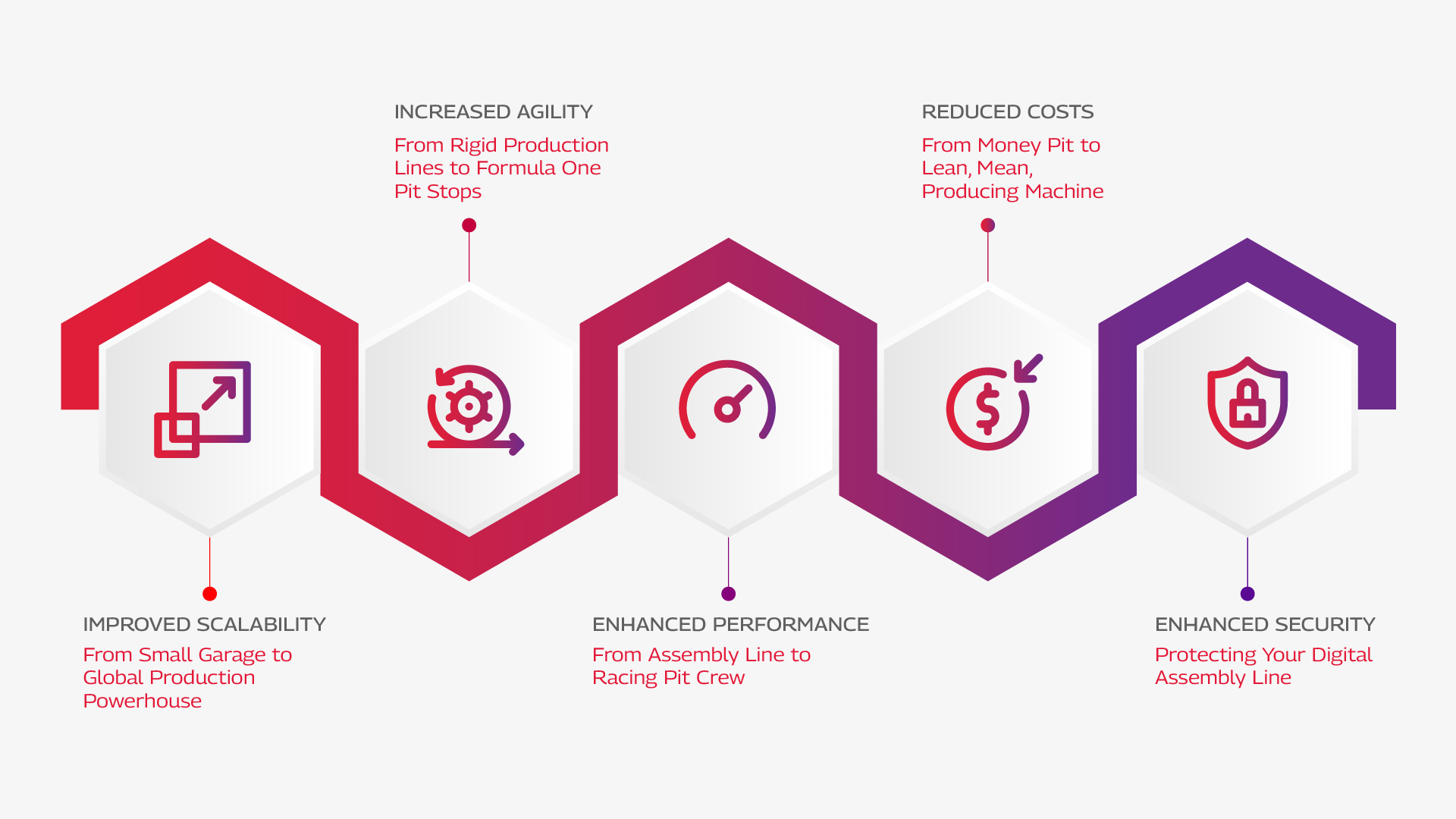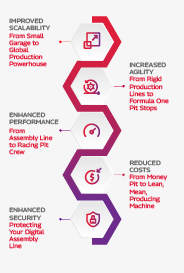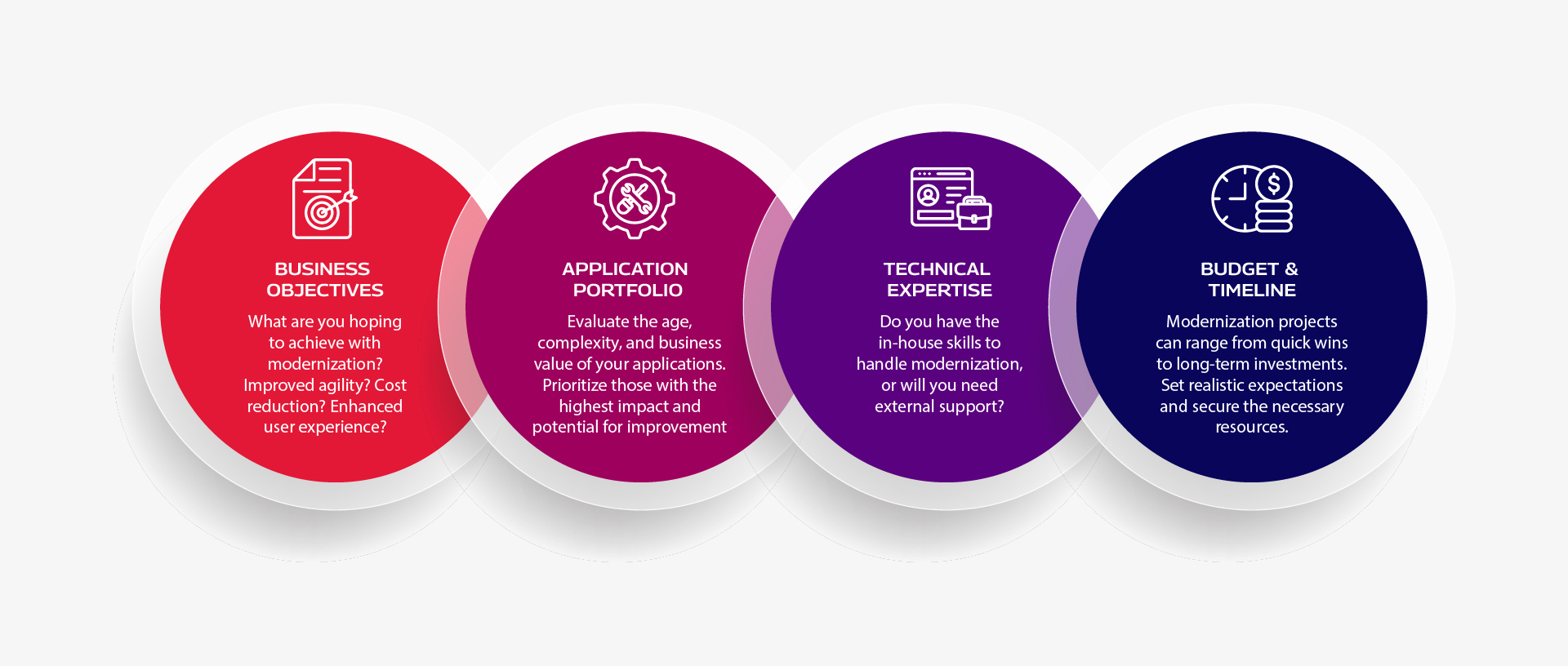Application Modernization and Transformation: From Clunky Jalopies to Sleek Sports Cars

The tech industry is constantly evolving, with breakthroughs like GPT-4 showcasing its rapid progres. However, amidst these exciting developments, it's crucial to remember the fundamental principles that underpin sustainable technological advancement. While countless articles discuss the latest trends, including AI-generated content, focusing on foundational elements is key to successfully navigating the future of technology.
Application Modernization / Modern Software Engineering: A Critical Capability for Today's Tech Leaders
The tech industry is constantly evolving, with breakthroughs like GPT-4 showcasing its rapid progres. However, amidst these exciting developments, it's crucial to remember the fundamental principles that underpin sustainable technological advancement. While countless articles discuss the latest trends, including AI-generated content, focusing on foundational elements is key to successfully navigating the future of technology.
Why CTOs and CIOs Need to Embrace Modernization?
It's Not Just About the Shiny Paint Job
Sure, a modernized application looks better, with a user interface that doesn't resemble a relic from the 90s. But the real benefits go much deeper. And am sure you know these. But let’s imagine scenarios to determine the outcomes that are direct derivates of modernized technology:


Improved Scalability: From Small Garage to Global Production Powerhouse
Imagine your manufacturing operation as a car. In the past, it might have been a compact car, perfect for navigating local roads but struggling to handle larger payloads or longer journeys. Modernization transforms your operations into a versatile vehicle, capable of scaling up or down to meet any demand, like a transformer that can shift from a nimble sports car to a heavy-duty truck in an instant.
Technology | The How | Outcomes | Key Benefits |
Cloud computing platforms | Migrate applications to the cloud to leverage elastic scalability and on-demand resource provisioning. | Ability to adapt to fluctuating production demands and seasonal peaks. | Flexible Production Capacity Seamless Supply Chain Integration
|
Containerization | Containerize applications for portability and efficient resource utilization, allowing for horizontal scaling across multiple servers. | Optimize resource utilization across production facilities and geographically distributed operations. | |
Serverless computing | Utilize serverless functions for event-driven workloads, automatically scaling based on demand without server management. | Efficiently handle spikes in data processing needs, such as during quality control inspections or supply chain updates. | |
Auto-scaling mechanisms | Implement auto-scaling rules to dynamically adjust resources based on predefined metrics, ensuring optimal performance and cost efficiency. | Automatically scale computing resources to meet changing production demands, ensuring optimal performance and cost efficiency. |
Increased Agility: From Rigid Production Lines to Formula One Pit Stops
Imagine your manufacturing process as a race car. In the past, it might have been a sturdy but inflexible vehicle, designed for a specific track and struggling to adapt to changing conditions. Modernization transforms your operations into a Formula One car, with the agility and responsiveness to navigate any course and pit stop with lightning speed.
Technology | The How | Outcomes | Key Benefits |
| Low-code/No-code platforms | Empower citizen developers to build and modify applications without extensive coding knowledge, accelerating innovation and reducing development time. | Enable rapid development of custom applications for specific production needs or process automation. | Rapid Prototyping and Innovation Flexible Manufacturing Processes Faster Response to Market Changes Empowered Workforce
|
| API-driven architecture and microservices | Design applications as a collection of loosely coupled microservices that communicate via APIs, allowing for independent development and deployment. | Simplify integration with new equipment, sensors, and automation systems. | |
| DevOps practices and tools | Automate build, test, and deployment processes to accelerate software delivery cycles and enable rapid iteration. | Faster implementation of new production technologies and process improvements. Quickly respond to changing customer demands and market trends. | |
| Agile development methodologies | Adopt agile practices to promote iterative development, collaboration, and rapid response to changing requirements. | Enhance collaboration between engineering, production, and IT teams. |
Enhanced Performance: From Assembly Line to Racing Pit Crew
Imagine your manufacturing operation as a race car on the track. In the past, it might have been a decent contender, but perhaps it lacked the fine-tuning and pit crew efficiency needed to truly excel. Modernization transforms your operations into a Formula One powerhouse, with every component optimized for peak performance and a pit crew that operates with lightning speed and precision.
Technology | The How | Outcomes | Key Benefits |
| Application Performance Monitoring (APM) tools | Monitor application performance metrics in real-time to identify bottlenecks and optimize resource utilization. | Improve responsiveness of production systems and reduce downtime. | Real-Time Data Insights
Improved Equipment Effectiveness
Predictive Maintenance |
| Caching mechanisms | Implement caching to store frequently accessed data, reducing database load and improving response times. | Accelerate data retrieval and analysis for faster decision making in production environments. | |
| Performance testing tools | Conduct regular performance testing to identify and address potential bottlenecks before they impact production environments. | Ensure systems can handle peak production loads and prevent performance issues. | |
| Code optimization techniques | Analyze and optimize application code to improve efficiency and resource utilization. | Reduce processing time for data analysis and reporting. | |
| Edge computing platforms | Enable real time data processing and analytics at the edge, closer to the source of data generation, for faster response times and improved operational efficiency. | Edge analytics allows for immediate identification and correction of quality issues during production, reducing the risk of defective products reaching customers. | |
| AI/ML platforms | Leverage artificial intelligence and machine learning for predictive maintenance, process optimization, and anomaly detection, leading to improved equipment effectiveness and reduced downtime. | Identify potential safety risks in real-time, allowing for immediate corrective action and preventing accidents. |
Reduced Costs: From Money Pit to Lean, Mean, Producing Machine
Imagine your manufacturing operation as a car with a fuel efficiency problem. It might get the job done, but it guzzles resources and costs a fortune to operate. Modernization transforms your operations into a fuel-efficient hybrid, optimizing resource utilization and minimizing waste to save you money at every turn.
| Technology | The How | Outcomes | Key Benefits |
| Cloud cost optimization tools | Analyze cloud spending patterns and identify opportunities to optimize resource usage and reduce costs. | Optimize cloud spending for production workloads and reduce overall IT infrastructure costs. Improve visibility and control over cloud expenses. | Lower IT Infrastructure Costs
Optimized Inventory Management
Streamlined Operations |
| Automation tools | Automate repetitive tasks and manual processes to improve efficiency and reduce labor costs. | Reduce labor costs associated with manual data entry, reporting, and other repetitive tasks. | |
| Open-source software | Consider open-source alternatives to proprietary software solutions to reduce licensing costs. | Lower software licensing and support costs for production and manufacturing applications. |
Enhanced Security: Protecting Your Digital Assembly Line
Imagine your manufacturing operation as a high-performance car. It's powerful and valuable, but also vulnerable to theft and sabotage. Modernization equips your operations with state-of-the-art security features, like a high-tech alarm system and armored plating, to protect your valuable assets and keep your operations running smoothly.
Technology | The How | Outcomes | Key Benefits |
| Cloud security platforms | Implement cloud-native security solutions to protect applications and data in cloud environments. | Protect sensitive production data and intellectual property from cyberattacks. Ensure compliance with industry regulations and safety standards. | Data Protection
Compliance and Regulatory Adherence
Supply Chain Security |
| Identity and Access Management (IAM) tools | Implement robust IAM solutions to control user access to applications and data, ensuring only authorized individuals have access. | Control access to production systems and data, preventing unauthorized access and data breaches. Enforce role-based access control for enhanced security and compliance. | |
| Security Information and Event Management (SIEM) tools | Use SIEM tools to collect and analyze security events, providing real-time threat detection and incident response capabilities. | Detect & respond to security threats real time, protecting production data from cyber-attacks. Gain insights into security events and identify potential vulnerabilities for proactive mitigation. |
Taking Your Application to the Shop: Modernization Options
Just like car upgrades, there are several paths to modernize your applications, each with its own benefits and trade offs:
- Replatforming (The Lift and Shift): This is like giving your car a fresh coat of paint and maybe some performance-enhancing tweaks. You move your application to a modern platform, like the cloud, without significant changes to the underlying code. It's a quick way to achieve benefits like improved scalability and reliability, but it's not a complete overhaul.
- Refactoring (The Tune-Up): Here, we're optimizing the existing code, like giving your engine a tune-up. It improves performance, maintainability, and security without changing the core functionality. This is a good option for applications with solid foundations but in need of a little TLC.
- Rearchitecting (The Extreme Makeover): This is the full rebuild, transforming your application into a cloud-native masterpiece using microservices, containers, and other modern technologies. It's the most complex and time-intensive option but offers the greatest long-term benefits in terms of agility, scalability, and cost efficiency.
- Replacing (The Trade-In): Sometimes, the best option is to retire your old clunker and invest in a brand-new, off-the-shelf solution. This can be the most cost-effective approach for applications that are outdated, unsupported, or no longer meet your needs.
Choosing the Right Approach: Avoiding Backseat Drivers and Potholes
The best modernization path depends on your specific needs, priorities, and budget. It's like choosing between a new set of tires, a performance upgrade, or a whole new engine – you need to assess the current state of your application, your long-term goals, and the resources available.
Guiding Principles for Your Modernization Journey:


Buckle Up for the Future: The Road to Digital Transformation
Application modernization is not a one-time event but an ongoing journey. As technologies evolve and business needs change, your applications need to keep pace. By embracing a culture of continuous improvement and partnering with skilled "mechanics," you can ensure your applications are always ready to navigate the ever-changing digital landscape.
In the next series, look forward to learning more about the framework, tool sets, best practices and blue- prints we have that details out dissection process for each application at every layer – Core, Data, Integration, SDLC, Runtime and Security.

As a trusted advisor, Prasanna Raghavendran’s responsibilities include offering counsel to clients worldwide on Modern Software engineering, covering Tech transformation and Cloud Modernization within Manufacturing Service Line. He has managed and delivered transformation projects for several Fortune 100 customers in Healthcare, Media & Entertainment, Manufacturing and Energy/Utilities business in North America.More
As a trusted advisor, Prasanna Raghavendran’s responsibilities include offering counsel to clients worldwide on Modern Software engineering, covering Tech transformation and Cloud Modernization within Manufacturing Service Line. He has managed and delivered transformation projects for several Fortune 100 customers in Healthcare, Media & Entertainment, Manufacturing and Energy/Utilities business in North America. He is a Seasoned IT evangelist with a vast experience in successfully establishing processes and teams for new projects especially in divestiture. He loves to play Snooker and has scored several half-century breaks in local County tournaments.
Less







